SC Reaffirms Commitment to Ending Violence against Women; Calls for Unity and Inclusivity
February 13, 2024
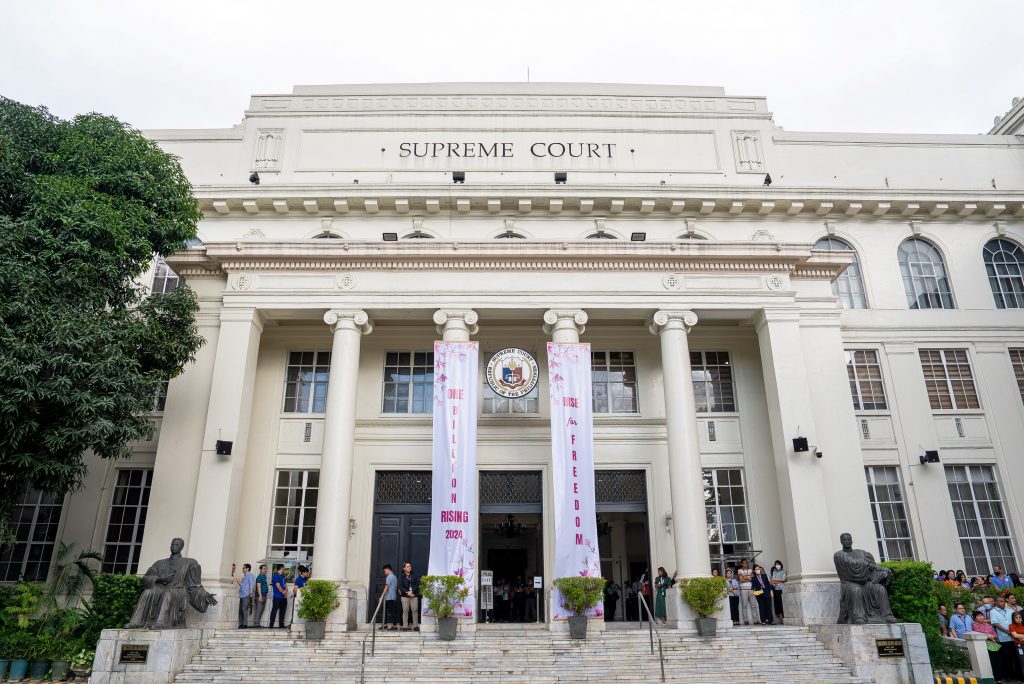
The Supreme Court of the Philippines joins the 2024 One Billion Rising Global Campaign: Rise for Freedom, which is the biggest global mass action in human history dedicated to ending violence against women (cisgender, transgender, and those who hold fluid identities that are subject to gender-based violence). (Courtesy of the Supreme Court Public Information Office)
The Supreme Court called for unity and inclusivity as it reiterated its commitment to ending all forms of violence against women at the kick-off activity in support of the 2024 One Billion Rising Global Campaign: Rise for Freedom at the Supreme Court grounds in Ermita, Manila on February 12, 2024.
Through its Committee on Gender Responsiveness in the Judiciary (CGRJ), the Court said that the One Billion Rising Global Campaign is in conformity with the Court’s blueprint of action for judicial reform, the Strategic Plan for Judicial Innovations 2022-2027 (SPJII). One of the guiding principles of SPJI is equal and inclusive justice.
Associate Justice Henri Jean Paul B. Inting said that the Court, through the CGRJ, has already institutionalized policies focused on gender equality and inclusivity in line with the SPJI, “which aspires to nurture a culture of respect, sensitivity, and inclusivity across distinct genders, identities, roles, needs, and vulnerabilities.”
“The CGRJ aims to put in place systematic mechanisms to balance the rights of all under the lens of fundamental equality before the law. Its efforts are but a culmination of the Court’s desire to establish the Judiciary, as a whole, as a bastion of equality; that Justices, Judges, and all court personnel, take seriously the implications of their actions in the achievement of ending gender-based violence, whether individually or collectively, whether referring to the adjudication of cases, or to simple court administration, until, any form of violence becomes unthinkable,” said Associate Justice Inting, who co-chairs the CGRJ together with Associate Justice Jhosep Y. Lopez and Associate Justice Maria Filomena D. Singh.
Justice Inting concluded his message by urging everyone “to appreciate the uniqueness in the identities of the people around us and embrace the different colors of personalities they have. Let us rise above our differences; for only then can we achieve togetherness despite our diversities.”
Justice Lopez echoed the Court’s call for support: “The Supreme Court, through the CGRJ and OAS, stands firm in its commitment as a beacon of change. For a future free from violence and discrimination against genders, I, together with my co-chairpersons in the CGRJ, Justice Henri Jean Paul B. Inting and Justice Maria Filomena D. Singh encourage all of you to support efforts and initiatives of the Court.”
Justice Lopez said that the One Billion Rising Campaign “is a poignant reminder of the significance of solidarity in the call to end gender-based violence” as it “unites us globally to stand against battery and abuse committed against women, and to push for initiatives that will support and empower victims, be it by directly involving them in the healing process, or by holding the offender accountable.”
Citing the data from the Child Protection Network Foundation, Inc., there are 646 reported cases of violence against children and 216 cases of violence against women in the Philippines for January 1 and February 4, 2024 alone. Justice Lopez said that of the 646 violence against children cases, 462 or 71.52% involved sexual abuse or assault.
He urged everyone “to be more aggressive in our fight against gender inequality and discrimination.” He added that that education will serve “as a potent tool in eliminating violence against women and children” by “fostering open dialogue dispelling myths, and nurturing understanding, we empower our communities to cultivate a culture drawn from love, compassion, and respect.”
Clerk of Court En Banc Atty. Marife L. Cuevas, meanwhile, announced the Court activities in support of the One Billion Rising Global Campaign, which is the biggest global mass action in human history dedicated to ending violence against women (cisgender, transgender, and those who hold fluid identities that are subject to gender-based violence).
The Court will hold a free screening of the Usapang Puke (Vagina Monologues) on February 16, 2024, from 8 A.M. to 12 P.M.
On February 19, 2024, an outreach program will be conducted at the
Bahay Kalungan Quezon City, a temporary shelter for women and children who suffered from violence and abuse.
On February 23, 2024, the Court will hold a Seminar on Recovering from Psychological Abuse from 8 A.M. to 4 P.M. at the SC Training Center. The Seminar will focus on the steps and methods that promote positive recovery from violence and abuse. (Courtesy of the Supreme Court Public Information Office)
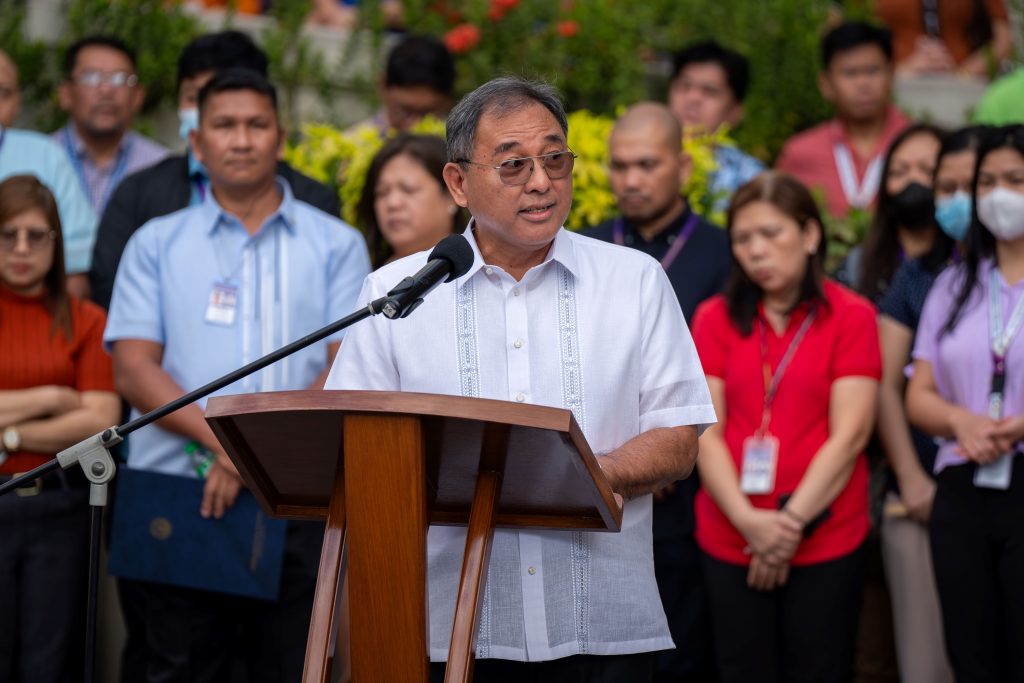
Associate Justice Henri Jean Paul B. Justice Inting, co-chair of the Supreme Court Committee on Gender Responsiveness in the Judiciary (CGRJ), urges urging everyone “to appreciate the uniqueness in the identities of the people around us and embrace the different colors of personalities they have. Let us rise above our differences; for only then can we achieve togetherness despite our diversities” at the kick-off activity in support of the 2024 One Billion Rising Global Campaign: Rise for Freedom at the Supreme Court grounds in Ermita, Manila on February 12, 2024. (Courtesy of the Supreme Court Public Information Office)
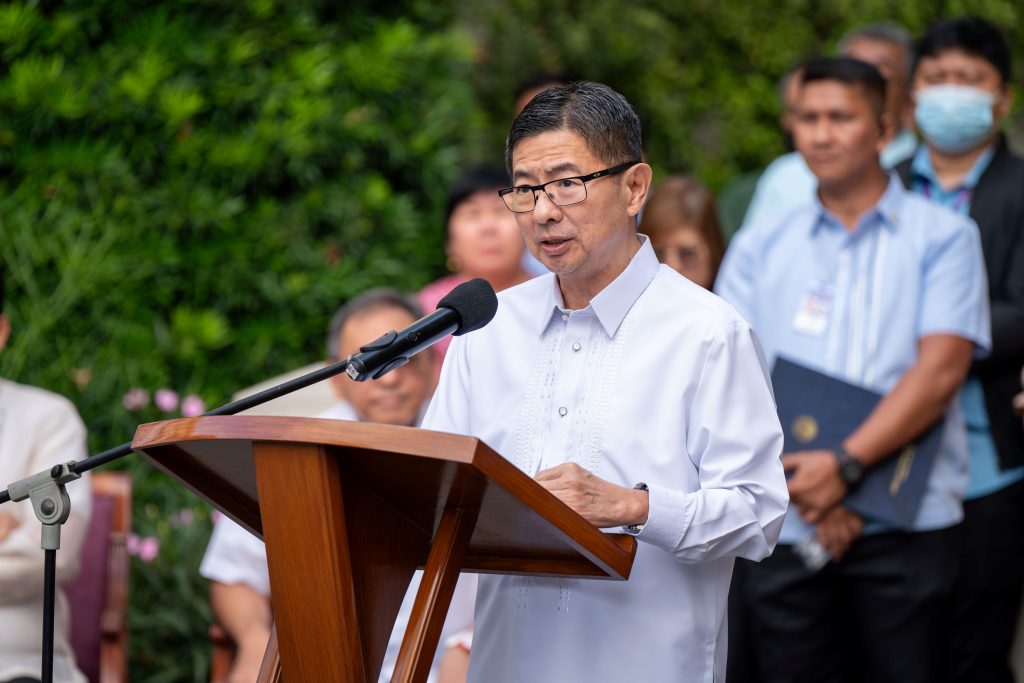
Associate Justice Jhosep Y. Lopez, co-chair of the Supreme Court Committee on Gender Responsiveness in the Judiciary (CGRJ), urges everyone “to be more aggressive in our fight against gender inequality and discrimination at the kick-off activity in support of the 2024 One Billion Rising Global Campaign: Rise for Freedom at the Supreme Court grounds in Ermita, Manila on February 12, 2024. (Courtesy of the Supreme Court Public Information Office)
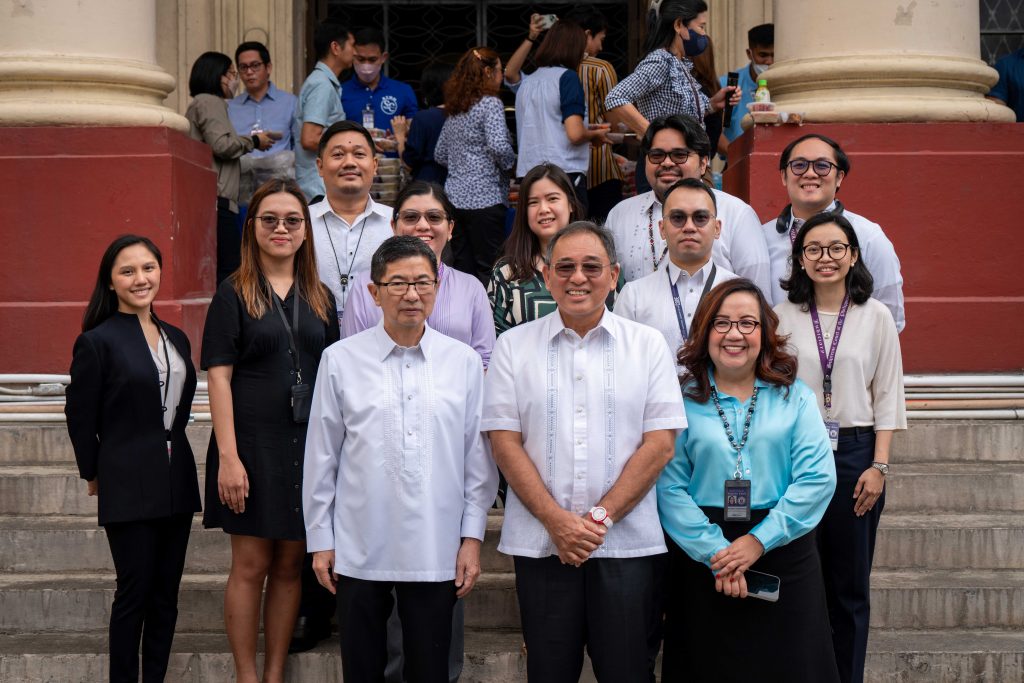
Associate Justice Henri Jean Paul B. Inting and Associate Justice Jhosep Y. Lopez, co-Chairpersons of the Supreme Court Committee on Gender Responsiveness in the Judiciary (CGRJ), together with Deputy Clerk of Clerk and Chief Administrative Officer Atty. Maria Carina A. Matammu-Cunanan, pose for posterity with some of their staff shortly after the flag-raising and the kick-off activity in support of the 2024 One Billion Rising Global Campaign: Rise for Freedom at the Supreme Court grounds in Ermita, Manila on February 12, 2024. (Courtesy of the Supreme Court Public Information Office)
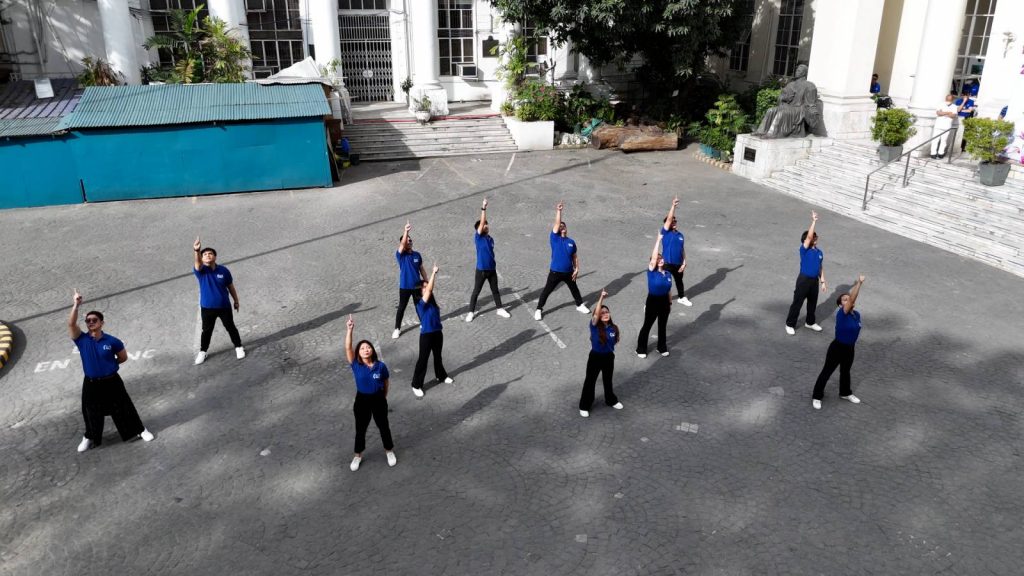
The Supreme Court Dancers dance to the “Bangon Babae, Bangon” music to celebrate the One Billion to commemorate the 2024 One Billion Rising Global Campaign: Rise for Freedom at Supreme Court grounds in Ermita, Manila on February 12, 2024. (Courtesy of the Supreme Court Public Information Office)












